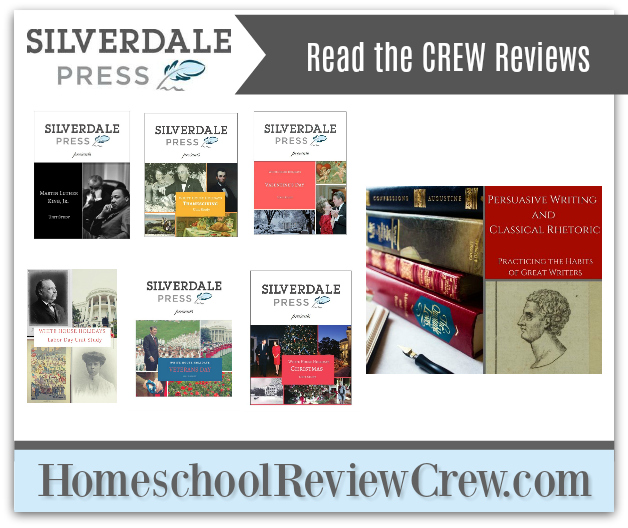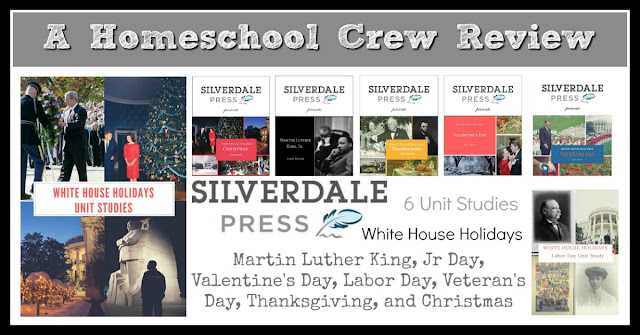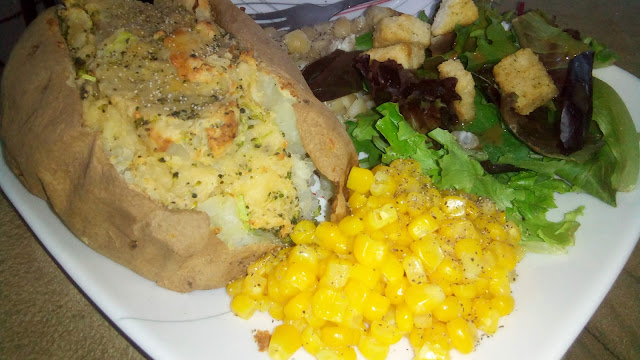Each year, our country celebrates various National Holidays with barbecues, fireworks, and huge turkey dinners. We might know what many of these holidays represent but do you know how these holidays became National holidays or why they are celebrated on a specific day of the week rather than on a particular date on the calendar?
The last few weeks, Ashleigh and Garrett have been learning about two of these holidays, Veterans Day and Labor Day, two of the unit studies from the White House Holidays Unit Studies from Silverdale Press LLC.
About Silverdale Press LLC and the White House Holidays Unit Studies
 Founded by homeschooling parents of four Joshua and Jill Hummer, Silverdale Press was created to provide curriculum consisting of unit studies, writing curriculum and social studies curriculum for all grades and ages.
Founded by homeschooling parents of four Joshua and Jill Hummer, Silverdale Press was created to provide curriculum consisting of unit studies, writing curriculum and social studies curriculum for all grades and ages.The White House Holidays Unit Studies series is a collection of six individual study units for grades K-12 to teach the history of our national holidays. Currently, units are created to cover Labor Day, Veterans Day, Thanksgiving, Christmas, Valentines Day, and Martin Luther King Jr Day.
Written by Jill Hummer, each unit study is broken into individual lessons that can be do over the course of a weeks time. Some unit studies, such as the Veterans Day unit study are fairly short, consisting of 3 lessons while larger unit studies, such as the unit Study on Martin Luther King Jr and Thanksgiving, are longer in length and are 5 lessons.
Each study contains options for different grade levels that include activities gears for different grade levels. Lessons are broken down for either students grade K-6th or for grades 7-12th, with the younger grade levels receiving a more abbreviated, condensed reading lesson while older students are presented with more detailed information. Activities and questions are also adjusted for learning levels to allow for different learning outcomes.
Each of the individual unit studies are a downloadable PDF format allowing for easy of printing for multiple students. Files are between 49 and 78 pages, depending on the length of the study, but again, this includes both the K-6th and 7th-12th grade studies. A Teacher's Answer Key is also provided.
How We Used It
While we were given PDF for all six units, for this review period the kids and I decided to focus on the Veterans Day and the Labor Day Studies. Both of these studies consisted of three lessons a piece, allowing us to work on the two of them over the course of the last six weeks. Since Ash and Garrett are both 4th graders, it was easy for me to just print the lessons we needed for the K-6th level, staple them together and then punch them to fit into our daily notebook.
Since Memorial Day was coming quickly, we decided to work through the Veteran's Day unit as our introduction to Silverdale Press's Unit Studies, since we were completely unfamiliar with this company prior to this review. This Unit Study consisted of three lessons and all together was 49
pages in length. Since we were working just with the K-6th lessons, we only needed to print out pages 1-27, which included the title page, the introduction and how to use pages, and a table of contents. Printing front and back, this unit study only required 14 pages of paper.
The Veteran's Day unit introduced the kids to the story of Armistice day and the United States involvement in World War 1 and the events that led to that involvement. They learned about who the major players in the Great War was and which countries were considered the Central Powers and which countries comprised the Allies. It also covered the actions that President Woodrow Wilson and the American troops took in order to bring the end of the war that led to the signing of the Armistice on Nov 11th, 1918.
Each unit study includes a few various activities for students to get more "hands on" with their learning. For the hands on activity for Veterans Day, the students read the poem "In Flanders Fields" and learned about the significance of the Red Poppy for Veterans affairs. So we all made poppies together. Even Alyssa came in to join us for making poppies.
 |
 |
Lesson 2 concentrated on the the fact that during the Great War, Americans at home made sacrificed in order to help feed and cloth the soldiers abroad through paying higher taxes and by "Hooverizing" their dinners. The children learned about who Herbert Hoover was and what types of recommendations he came up with in order to help people to not waste food by creating War Gardens, cleaning their plates at every meal, eating meatless meals and eating corn at every meal.
For the end of lesson 2, the kids decided they would try a "Hooverized" meal. They selected a twice baked broccoli and cheese stuffed potato with a salad and of course, corn. No meat in site and we made sure to clean our plates. (I was told afterwards I broke the rule with it not being wheatless - the kids checked the ingredients on my croutons!!)
Lesson Three tied everything together as we learned how Dwight Eisenhower, a beloved military hero, became President and eventually changes Armistice Day to Veterans day as a way to show thanks to ALL of Americas veterans.
For the activity on lesson 3, the kids were asked to do a few various activities, such as listen to Taps, Pray for peace for those serving, display a flag in our yard, wear a poppy on Veterans Day, or plant poppy seeds. We actually did a number of these activities - although we wore our poppies for Memorial Day (we will save them to wear again in November for Veterans Day).
Overall, we really enjoyed this unit study and even Mom learned a lot from it.
For our second unit study, ,we opted for the Labor Day Unit Study. This study was also three lessons
long. In it's entirety the unit study is 53 pages in length. Since we were only using the K-6th grade lessons, we printed out the first 23 pages which again, includes the title page, introduction, how to use page and table of contents.
For this unit, the kids learned about the horrible working conditions of the American worker (particularly those recently immigrated to America) in the late 1800s and early 1900s. The kids were shocked to learn that even children younger then they are were required to work in order to help support the family. The lesson discussed the living conditions in tenements and about sweatshops and how Eleanor Roosevelt, long before becoming the First Lady, would work to help change the dangerous working conditions for women and children.
For this particular lesson, the activity asked the kids to look at several pictures, taken from the collection of the Library of Congress, that showed families working at various activities and then answer questions as to what they observe and what they thought of the situation. My kids thought that most of them looked more like the children helping the parents in normal household activities, such as shelling peas or hemming a bedsheet. It wasn't until I explained to them that the peas were not going to be use for that families dinner or on their bed and that they were being paid mere pennies each to do the work, kids included, that they really understood what was happening in the pictures. They thought it was very sad that the kids probably didn't get to play since they were always having to work (the reading mentioned many times they dropped from exhaustion as they worked so much).
For Lesson 2, the kids learned about the first Labor Day parade and about unions. I'll be honest, they didn't seem to pay much attention to this particular part of the lesson and Ashleigh was confused why Peter McGuire and Matthew Maguire weren't related since they had the same last name, even if it was spelled differently. I think with the fact that she was so puzzled by that particular tidbit that she couldn't concentrate on anything else with that lesson.
The activity that went with lesson 2 was another activity in regards to observation. The kids were provided with an editorial picture that depicted the first Labor Day Parade and to pay attention to the various writings on the posters and banners. This was hard for them using the printout and we had to pull it up on the computer and magnify it about 250% to be able to read the various signs.
The final lesson for Labor day discussed the Pullman Railroad strike and how President Grover Cleveland created the holiday that we know today as Labor Day. Since Garrett enjoys trains, this part of the lesson seemed to interest him the most. So, instead of doing the activity for lesson 3 (to create a poster to tell how Labor Day became a holiday), we found a few videos to watch - one about Pullman railroad cars and a few others about the Pullman Railroad Strike itself.
While we didn't enjoy this one quite as much as we enjoyed the Veteran's day Unit Study, we still found it to be educational and everyone (including mom) walked away knowing a great deal more than when we started it.
We still have four more unit studies that we will work through over the course of the next few months. I'm particularly looking forward to both the Christmas and the Valentines Day studies as I think the kids will really enjoy those and I also look forward to the Martin Luther King Jr study as well, although it might not be as interesting to the kids. I also enjoy the fact that even once we are finished with all six unit studies, I can put them away and then revisit them in a few years using the higher grade level lessons.
For more information about Silverdale Press LLC, visit their website. You can also find them on the following social media sites:
Facebook: https://www.facebook.com/SilverdalePress/ Tag: @SilverdalePress
Twitter: https://twitter.com/silverdalepress Tag: @SilverdalePress
Pinterest: https://www.pinterest.com/silverdalepress/
And don't forget to click the banner below to read more reviews from the members of the Crew. In addition to those of us who reviewed the White House Holiday Unit Studies, other members of the Crew reviewed Persuasive Writing & Classical Rhetoric: Practicing the Habits of Great Writers , a writing curriculum for ages 14-18.















No comments:
Post a Comment
Note: Only a member of this blog may post a comment.